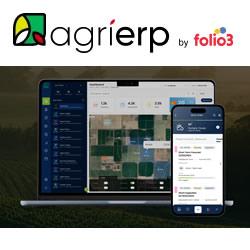Agricultural Robots Innovations Powering the Next Green Revolution
Agricultural robots, or AgriBots, are automated machines that handle tasks like planting, watering, harvesting, and crop monitoring with minimal human input. Using AI, sensors, and GPS, they improve precision, boost yields, reduce waste, and tackle labor shortages. These robots enable precision farming, automated seeding, efficient harvesting, and smart weed and pest management, promoting sustainable agriculture by optimizing resources and reducing chemical use. AgriBots are transforming farming into a more productive, sustainable, and resilient industry.
What Are Agricultural Robots?
Agricultural robots, often called AgriBots, are automated machines designed to perform a wide range of farming tasks with minimal human intervention. From soil analysis and planting seeds to watering crops and harvesting fruits, these robots are built to handle repetitive and labor-intensive tasks efficiently.
Unlike conventional machinery, which often requires human guidance, AgriBots operate autonomously or semi-autonomously, using a combination of machine learning, GPS navigation, and advanced sensors. This enables them to adapt to different environments, recognize crop health, and even make decisions based on real-time data. The result is higher precision, improved yields, and reduced wastage, all while lowering the dependency on manual labor.
Why Farming Needs Robots
Modern agriculture is facing unprecedented challenges as global demand for food continues to rise. The world's population is steadily growing, placing immense pressure on traditional farming methods to keep up. At the same time, rural areas across the globe are experiencing a shortage of skilled agricultural workers, making it difficult to carry out labor-intensive tasks efficiently
labour shortages, farmers are grappling with rising production costs, including expenses for labor, fertilizers, water, fuel. Conventional farming practices can also strain natural resources, contributing to environmental degradation. AgriBots address these challenges by optimizing resource use, applying water and fertilizers with pinpoint accuracy, monitoring soil health in real time.
The global agricultural robots market size was valued at USD 15.63 billion in 2024 and is projected to reach approximately USD 84.49 billion by 2033, growing at a CAGR of 20.62% between 2024 and 2033.
Discover More
How Robots Are Changing Agriculture
Agricultural robots are not just tools they are partners in farming. Here's how they are reshaping modern agriculture:
- Precision Farming: Robots equipped with sensors and AI can monitor soil moisture, nutrient levels, and crop health in real time. This allows farmers to apply fertilizers, water, and pesticides only where needed, reducing waste and improving crop quality.
- Automated Planting and Seeding: Robots can plant seeds at the perfect depth and spacing, ensuring uniform crop growth and higher yields.
- Efficient Harvesting: Harvesting robots can pick fruits and vegetables with minimal damage, reducing losses and improving profitability.
- Weed and Pest Management: Smart robots can detect weeds and pests, removing or treating them without harming crops, reducing the reliance on chemicals.
The Bigger Picture: Sustainability and Innovation
The integration of robots in agriculture goes beyond efficiency—it's about building a sustainable food system. By reducing overuse of water, fertilizers, and pesticides, robots help preserve ecosystems and promote environmentally friendly farming practices. Moreover, their ability to work continuously and autonomously enables farms to increase productivity without overexerting human labor.
As technology advances, agricultural robots are expected to become smarter, more affordable, and widely accessible, bringing high-tech farming to farms of all sizes. The convergence of robotics, AI, and IoT (Internet of Things) promises a future where farming is more productive, sustainable, and resilient to the challenges of climate change and population growth.
Types of Agricultural Robots
Agricultural robots come in various forms, each designed to tackle specific farming tasks with efficiency and precision.
- Autonomous Tractors: These tractors can plow, seed, and fertilize fields without human intervention. Guided by GPS and onboard sensors, they follow precise routes, reducing fuel consumption and soil compaction while maximizing productivity.
- Harvesting Robots: Designed for delicate crops such as fruits and vegetables, harvesting robots use machine vision and AI to identify ripe produce and pick it carefully. This reduces crop damage and minimizes post-harvest losses.
- Weeding Robots: Equipped with advanced sensors and AI, weeding robots can differentiate between crops and unwanted plants, removing weeds mechanically or with targeted herbicides. This reduces chemical use and promotes sustainable farming.
- Drones in Agriculture: Agricultural drones fly over fields to monitor crop health, assess soil conditions, and even spray fertilizers or pesticides with high accuracy. They provide farmers with aerial data that would be difficult to gather manually.
Challenges Facing Agricultural Robots
Despite their transformative potential, AgriBots face several challenges that affect widespread adoption:
- High Initial Investment: Advanced robotics systems come with significant upfront costs, which can be a barrier for small and mid-sized farms.
- Technical Expertise: Farmers need specialized training to operate, maintain, and troubleshoot robotic systems, which can be a learning curve for many.
- Infrastructure Requirements: Reliable electricity, internet connectivity, and smooth terrain are essential for many robotic operations, which may be limited in rural or remote areas.
- Environmental Limitations: Robots may struggle in uneven terrains, muddy fields, or extreme weather conditions such as heavy rain or snow.
Agricultural Robots Market Key Players
- AGCO Corporation
- Autonomous Solutions, Inc.
- BouMatic
- CNH Industrial N.V.
- CLAAS KGaA mbH
- GEA Group
- Harvest Automation, Inc.
- Trimble, Inc.
The Future of Agriculture
Agricultural robots are more than a technological novelty—they are a glimpse into the future of farming. As AI, robotics, and IoT continue to advance, farms will become smart ecosystems, capable of predicting crop diseases, optimizing resource usage, and even self-managing large fields with minimal human intervention.
The rise of AgriBots is also aligned with global sustainability goals. By reducing chemical usage, conserving water, and improving soil health, robotic farming helps address environmental concerns while feeding a growing population.
Immediate Delivery Available, Get Full Access| Click Here
About Us
Vision Research Reports is a Canada/India based company and one of the leading providers of strategic market insights. We offer executive-level blueprints of markets and solutions beyond flagship surveys.
Contact Us: sales@visionresearchreports.com
Featured Product

